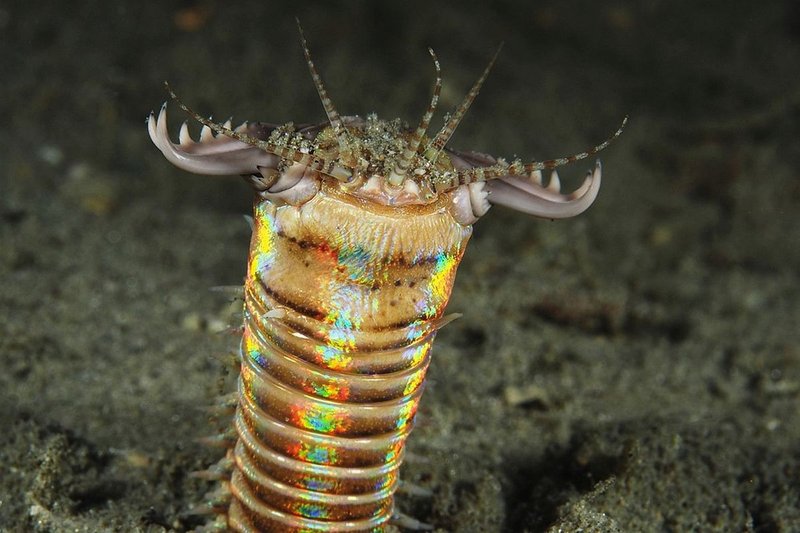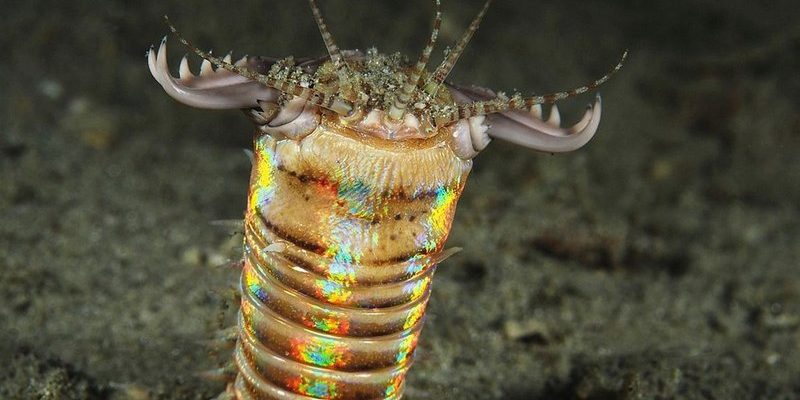
So, do these worms pose a real threat to those of us who enjoy swimming or diving in ocean waters? Let’s dive into this topic and explore the truth behind these peculiar marine inhabitants. You might be surprised by what we find out!
What Exactly Is a Bobbit Worm?
Bobbit worms, or *Eunice aphroditois*, are marine polychaete worms known for their impressive length—some can grow up to 10 feet! They’re often found in tropical and subtropical waters, hiding in sandy or muddy substrates. Picture a long, skinny, segmented creature that blends into its environment. It’s like nature’s version of a magician, making it hard to spot until it’s too late.
These worms are named after a rather sensational story about Lorena Bobbitt, which drew attention to their fierce predatory nature. Bobbit worms are equipped with sharp jaws and a hunting strategy that’s almost stealthy. They burrow into the sea floor, leaving only their head exposed, and when they sense movement nearby, they strike with lightning speed. It’s a survival tactic that’s both impressive and a bit frightening.
How Do Bobbit Worms Hunt?
You might be wondering how exactly these worms catch their prey. The way they hunt is a marvel of the underwater world. Bobbit worms use a combination of patience and speed, which can sometimes remind you of a cat waiting for a mouse to appear.
– **Camouflage**: They blend into their surroundings, making it hard for fish and other small creatures to notice them.
– **Retracting**: When they sense movement, they can quickly pull themselves back into their burrow or attack with their powerful jaws.
– **Feeding**: Their diet mainly consists of small fish and crustaceans. They grasp their prey with their sharp jaws and consume them right on the spot.
This predatory behavior makes them interesting but also raises questions about their interactions with others in the ocean, including humans.
Are Bobbit Worms Dangerous to Humans?
Honestly, this is where it gets a bit tricky. Bobbit worms are not typically a direct threat to swimmers or divers. Most of the time, they will do their best to avoid contact with larger creatures, including humans. However, there are a couple of points worth considering.
– **Bites**: There have been reports of Bobbit worms delivering painful bites if humans accidentally come too close. They defend themselves when threatened, just like many other creatures in the ocean.
– **Health Risks**: While a bite may cause pain and swelling, it’s rarely life-threatening. Still, anyone who suffers a bite would want to clean the wound properly and watch for any signs of infection.
So, while they are not actively hunting us, it’s best to respect their space and keep our distance when exploring their habitats.
Where Are Bobbit Worms Found?
If you’re planning on exploring the ocean, you may be curious about where to find Bobbit worms. These creatures prefer tropical and subtropical waters, often residing in sandy or muddy seabeds. You’ll typically find them in:
– **Coral Reefs**: They thrive in these rich ecosystems, often hidden amongst the coral.
– **Seagrass Beds**: Another favorite spot for Bobbit worms, where they can easily camouflage among the grass.
– **Mangroves**: These areas provide a perfect environment for their burrowing habits.
Understanding their habitat is key for divers and swimmers. If you’re exploring these spaces, just remember to keep an eye out and be aware of your surroundings.
How to Stay Safe Around Bobbit Worms
Whether you’re a novice swimmer or an experienced diver, knowing how to navigate waters where Bobbit worms live is essential for safety. Here are some easy tips to keep in mind:
1. **Stay Aware**: Always be mindful of your surroundings. Look out for areas where the substrate looks disturbed—this could signal a Bobbit worm’s burrow.
2. **Avoid Touching**: Resist the urge to poke or prod at anything you come across. If you see what looks like a Bobbit worm, it’s best to admire from a distance.
3. **Wear Protective Gear**: If you’re diving or snorkeling, wear a wetsuit to give you an extra layer of protection against potential bites.
By taking these precautions, you can enjoy your underwater adventures while minimizing any risks associated with Bobbit worms.
What Should You Do If Bitten?
Even with precautions in place, accidents can happen. If you happen to get bitten by a Bobbit worm, here’s what you should do:
– **Clean the Area**: Rinse the bite site with clean water to remove any dirt or debris.
– **Apply Antiseptic**: Use an antiseptic solution or cream to reduce the risk of infection.
– **Monitor for Symptoms**: Keep an eye out for swelling, redness, or increased pain. If symptoms worsen or you start to feel unwell, seek medical attention.
Getting bitten by a Bobbit worm isn’t a pleasant experience, but with the right care, the issue can usually be resolved without major complications.
So, do Bobbit worms pose a threat to divers or swimmers? The short answer is: not really, as long as you’re aware and respectful of their space. These creatures are fascinating examples of marine life and play an important role in their ecosystems. However, as with any wild creature, maintaining a healthy distance is key to a safe underwater experience.
By staying informed and following some simple safety guidelines, you can enjoy ocean waters while keeping encounters with Bobbit worms to a minimum. Next time you’re exploring the underwater world, you can appreciate these intriguing, albeit intimidating, creatures from a safe distance!

